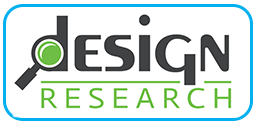“After searching for data on home décor styling trends, Assortment Styler was the only report with details on how Americans decorate their homes. The report gave us the competitive advantage across multiple titles of knowing the top home décor styles and historical and future trends.”
I can’t tell you how many times we’ve had this conversation:
Client: I need you to test these new products/designs/concepts.
Design Research: Great, how do you define the target audience for these products/designs/concepts?
Client: We don’t know who buys our product/we need you to tell us who the customer is/”Millennials”
This exchange, while typical is problematic. It says that the client developed products without a clear target consumer in mind. We don’t recommend this, but we can identify the audience for the product while also testing the product’s appeal. Typically, this means including a broad array of consumers by age, gender, education, income and ethnicities to see which group(s) likes the product. We can also probe for each group’s awareness of your brand name and which group(s) already owns your products. That’s a clear indication of your target audience.
If you don’t have a product to test and want to know who your target audience is, the procedure is still pretty much the same. We would ask a broad range of consumers for their awareness and ownership levels of your brand and products. If you don’t have presence in the marketplace yet, we would describe your product offerings conceptually to see who they attract.

